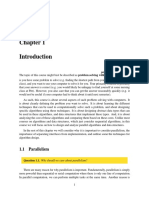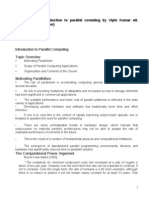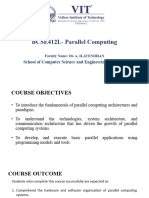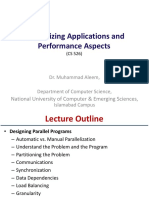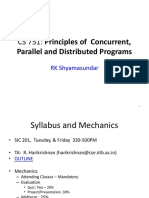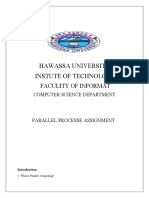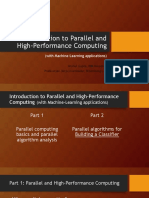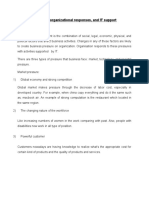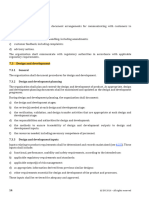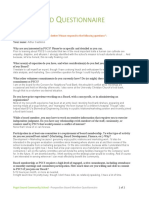0% found this document useful (0 votes)
50 views4 pagesParallel Algorithm and Programming
The document discusses parallel algorithm and programming. It covers parallel computing fundamentals and models including shared address space, distributed memory, and data parallelism. It also discusses parallel algorithm design including problem understanding, partitioning, communication, synchronization and mapping. Specific parallel programming paradigms are covered like shared address space and message passing. Performance analysis metrics for parallel programs are also outlined.
Uploaded by
Mahmud MankoCopyright
© © All Rights Reserved
We take content rights seriously. If you suspect this is your content, claim it here.
Available Formats
Download as PDF, TXT or read online on Scribd
0% found this document useful (0 votes)
50 views4 pagesParallel Algorithm and Programming
The document discusses parallel algorithm and programming. It covers parallel computing fundamentals and models including shared address space, distributed memory, and data parallelism. It also discusses parallel algorithm design including problem understanding, partitioning, communication, synchronization and mapping. Specific parallel programming paradigms are covered like shared address space and message passing. Performance analysis metrics for parallel programs are also outlined.
Uploaded by
Mahmud MankoCopyright
© © All Rights Reserved
We take content rights seriously. If you suspect this is your content, claim it here.
Available Formats
Download as PDF, TXT or read online on Scribd
/ 4


